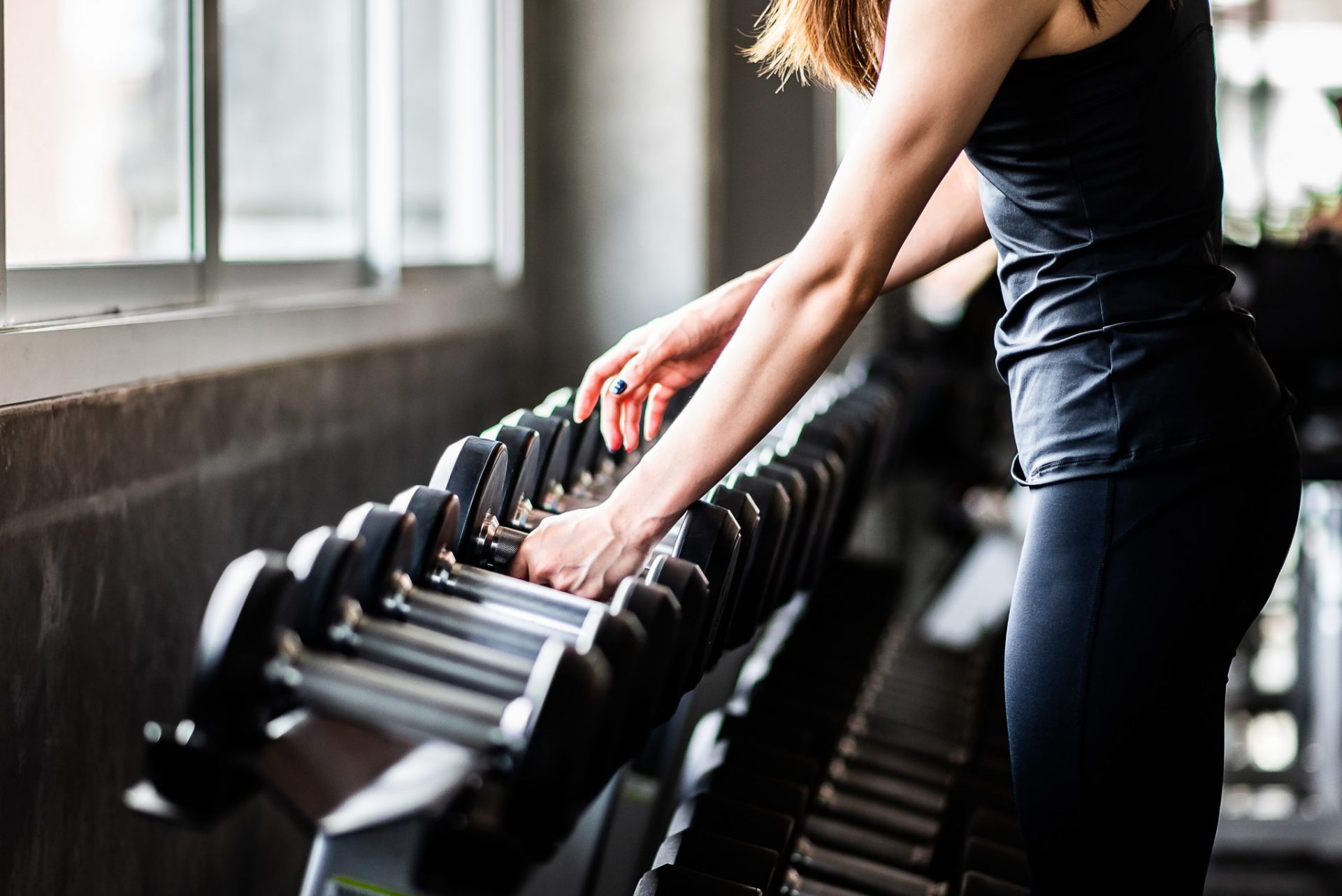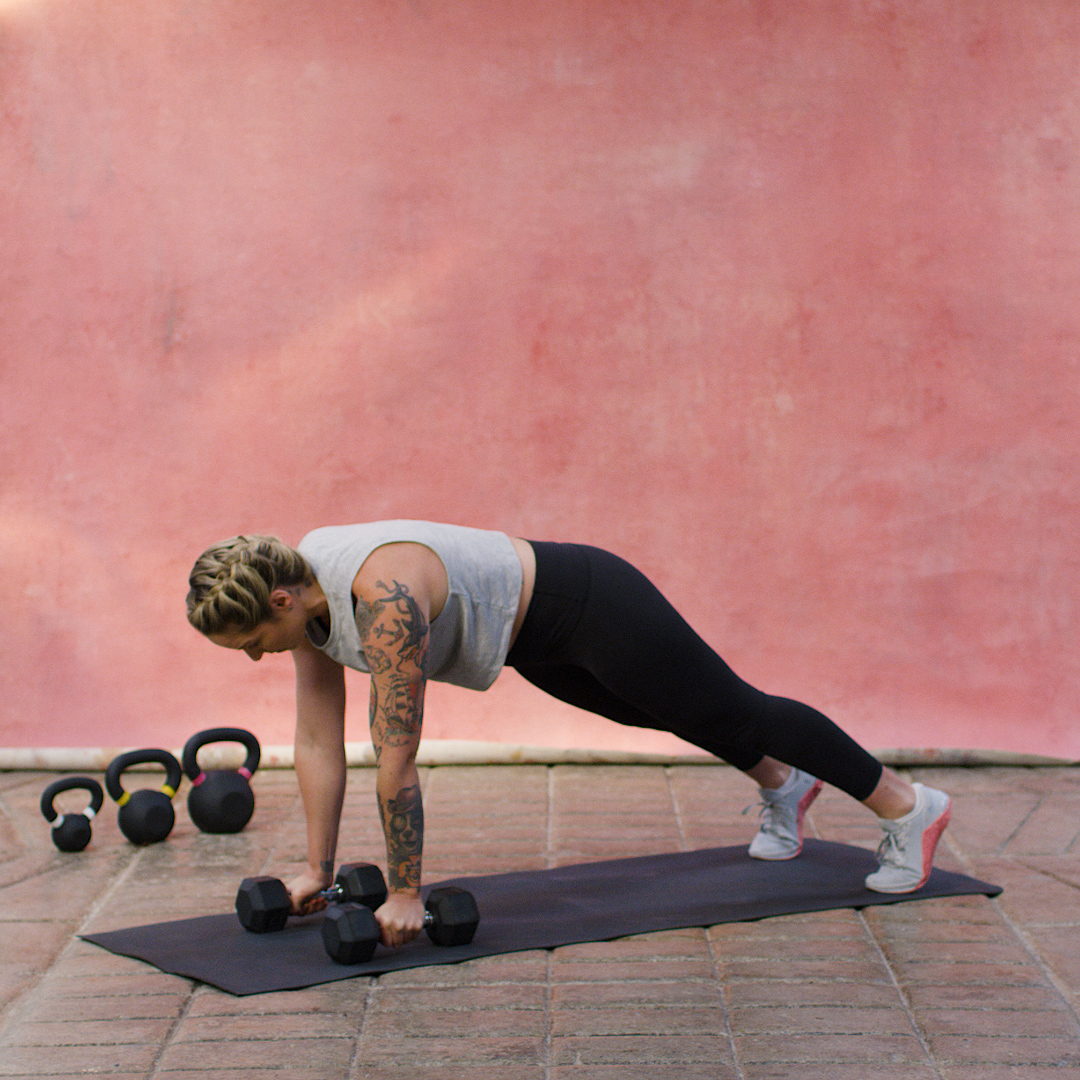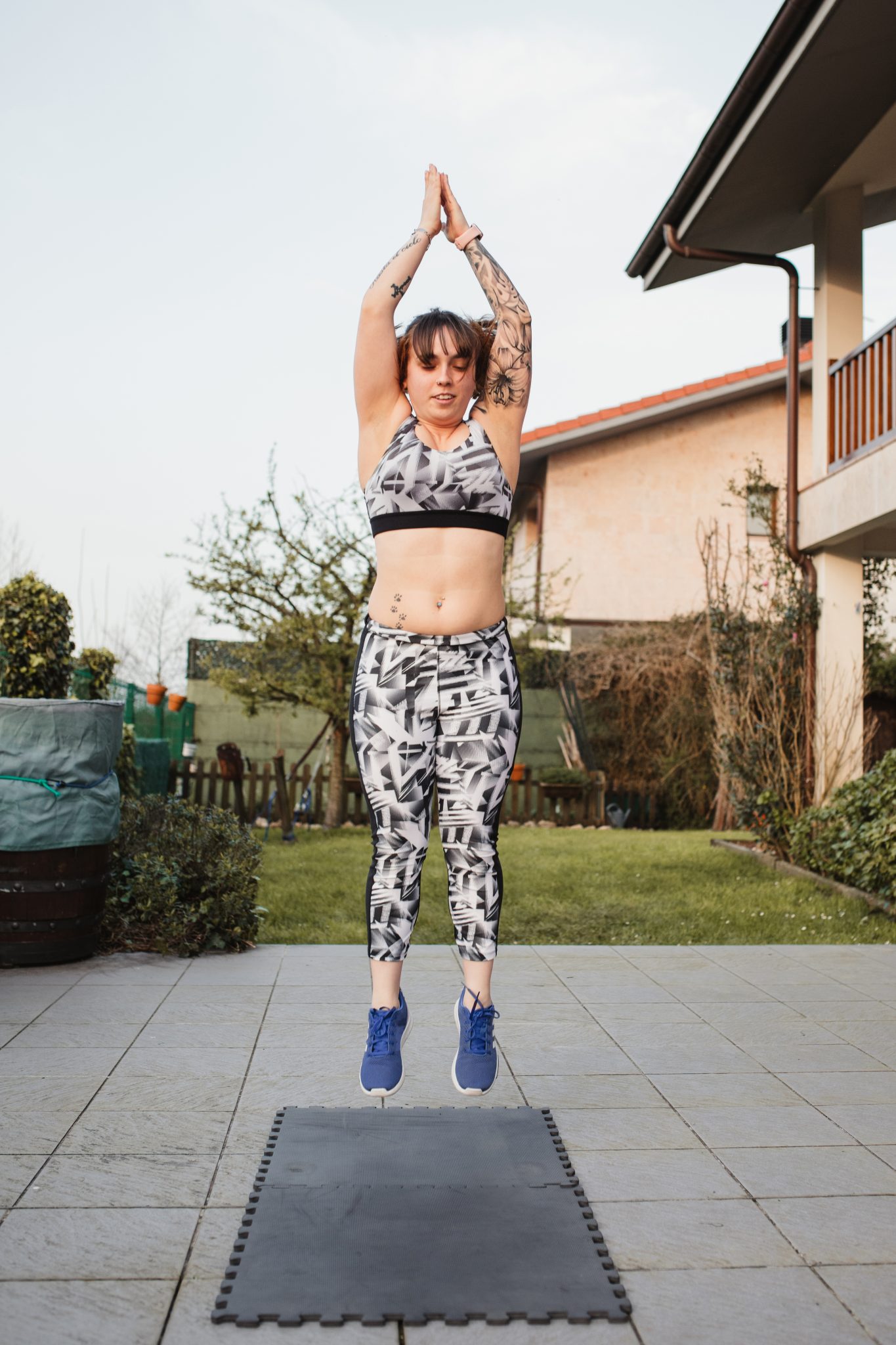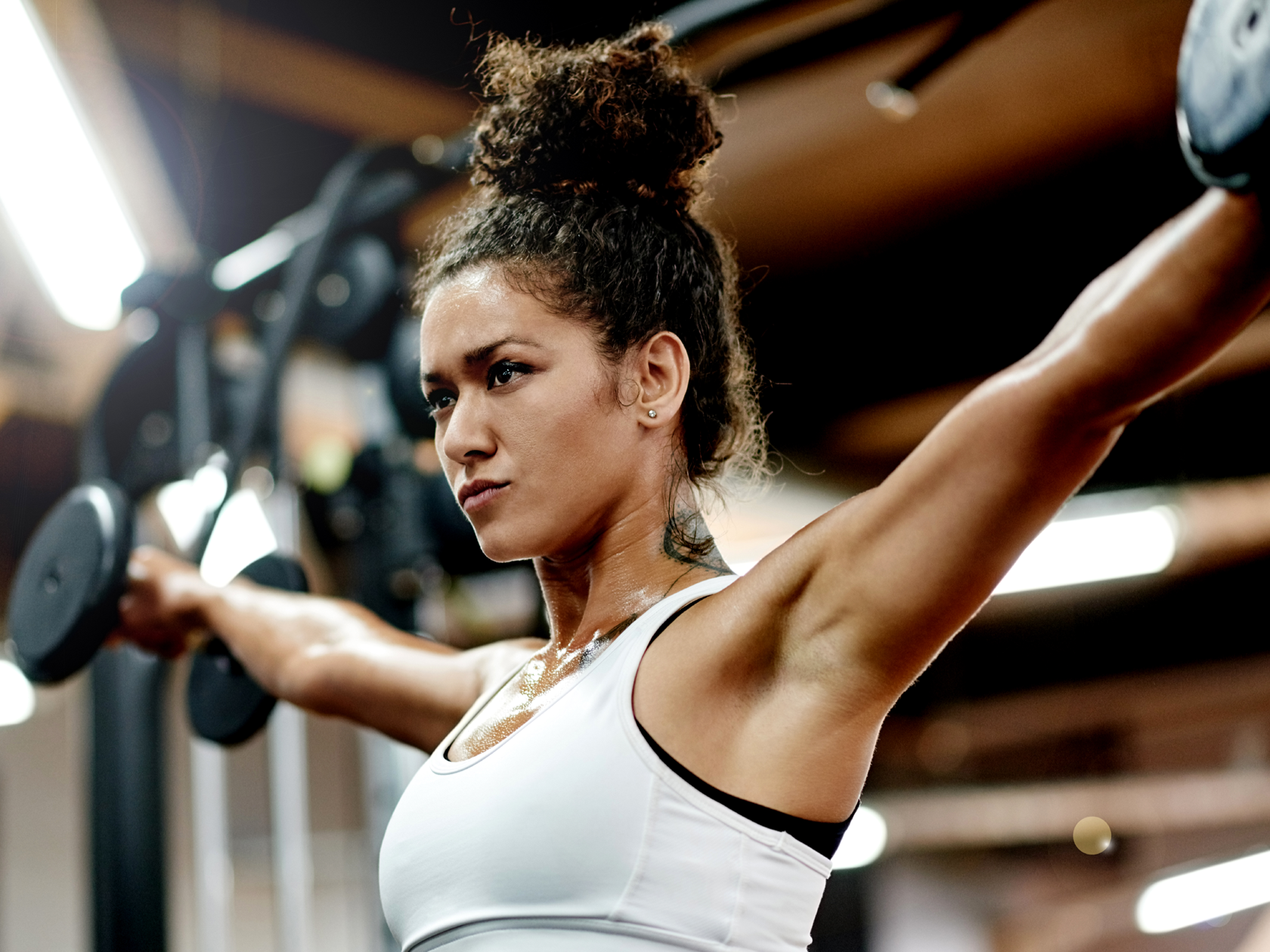If all you have are light dumbbells and you’re missing the post-workout burn, these exercises will help you keep on top of your strength training.
During lockdown, we saw our fair share of trends – from virtual quiz nights to banana bread recipes dominating our social media feeds. And while we loved everyone jumping on the home workout bandwagon, it did come at a price: kettlebells and dumbbells began selling out online across the country.
You may also like
Lockdown has made the gender gym gap worse – here’s what you can do about it
Needless to say, this was pretty frustrating for those of us looking to maximise our home workouts.
So now that we’re under lockdown again, we find ourselves being forced to make do with what we have at home – which might be a smaller pair of dumbbells for many of us. So, what to do when you’re used to hitting reps with weights at least double their size?
You may also like
Weight training for beginners: fitness experts explain how to get started lifting weights
We spoke to personal trainer and life coach Danielle Spillett to put together the most effective full body workout plan for when you only have small weights at home.
According to Spillett, you can still build muscles and get strong with smaller weights, but it’s all about the amount of reps you do and how much time you spend resting in between them.
“In order for muscle to grow, performance to increase or strength to be gained, your body must be forced to adapt to a tension beyond what it has previously experienced,” says Danielle. “One way to achieve this is by gradually increasing the weight.
However, with many of us finding ourselves with limited resources right now, another way to challenge the body is by adjusting our work-to-rest ratio, and using lighter weights with higher reps increases muscle endurance and cardiovascular involvement.”

This full body workout is designed to target all of the body’s major muscle groups. Complete all eight exercises as part of one round, and aim for a total of three rounds.
Challenge yourself by experimenting with these timings.
Beginner: 30 seconds of work, 15 seconds of rest (60 seconds rest between rounds)
Intermediate: 45 seconds of work, 15 seconds of rest (60 seconds rest between rounds)
Advanced: 60 seconds of work, 15 seconds of rest (45 seconds rest between rounds)
You may also like
Weight training: 6 female trainers on why strength training is so good for women
1. Renegade rows

- Hold a plank position with a dumbbell in each hand.
- Make sure that your body is in a straight line throughout the exercise.
- Keeping your elbows in tight to the body, use your right hand to pull the weight up towards your chest.
- Your entire body should remain still, with the only movement coming from the arm rowing.
- Repeat on the opposite side.
Modification: If you need to maintain better balance, come down to your knees. To make more challenging, press-up in between rows.
2. Glute bridge bench press
- Lay on your back with your knees bent and heels grounded on the floor.
- Hold onto a dumbbell in each hand with an overhead grip.
- Gently lift your hips from the floor and squeeze your glutes as high as you can so that your knees, hips rise up towards the ceiling, but maintain a straight line.
- Fully extend your arms, keeping them shoulder-width apart.
- Slowly lower the weights down until your elbows reach the ground.
- Push the weights up towards the ceiling by extending your arms until they’re straight.
- Ensure that the weights remain in line with your chest throughout the exercise.
Modification: To make this move more challenging, replace the chest press for a chest fly to isolate your pectoral muscles. Instructions for the chest fly below.
- Hold the dumbbells directly above the chest and start with the palms of the hands facing each other.
- Lower the weights out to the sides (as far down toward the floor as is comfortable, while keeping a slight bend in the elbows).
- Bring the arms back to the starting position to finish the movement.
You may also like
How long does it take to see results from strength training?
3. Forward-stepping lunge with bicep curl
- From a standing position, step forward into a lunge and lower your body down so that both knees are bent at a 90-degree angle.
- Make sure that your front knee is directly above your ankle and the back knee is as close to the floor as possible (for full range of motion during the lunge).
- As you step into the lunge, bend the arms to raise your weights up towards your shoulders into a bicep curl.
- Keeping the weight of your body in your front heel, push yourself back into a standing position whilst lowering the weights back down to your sides.
- Repeat with a lunge on the opposite leg.
You may also like
Building arm muscle: tips for stronger biceps and triceps from fitness trainers
4. Jab cross dumbbell punch in a semi-squat
- Stand with feet hip-width apart and lower down into a semi-squat position (halfway between standing and a deep squat)
- Keep your weight in your heels and bum pushed backwards.
- Holding a dumbbell in each hand, bring your arms up so that the palms of your hands are facing towards your face.
- Push your right arm out in front of you in a punching motion and as your arm bends to return back to the body, return to your starting position (standing).
- Repeat the semi-squat with a punch on the opposite arm.
5. Burpees with dumbbell press

- Stand with your feet shoulder-width apart and a dumbbell in each hand.
- Push your hips back and bend your knees as you lower the dumbbells onto the ground directly in front of you.
- Jump the feet back with your shoulders remaining directly over your wrists, so that you are in the plank position.
- Jump the feet back in towards the arms and as you stand up, raise the dumbbells over your head.
- Lower the weights back down at your sides.
6. Squat into high knee
- Stand with your feet about hip distance apart with your feet turned out slightly.
- Hold the dumbbells at chest level, with your elbows close to the body.
- Lower down into a squat.
- Keep your body weight in the heels and your chest open as you push your bum back as far as it will go.
- Push through the heels to come back to standing position and in a fluid motion, raise your right knee up towards your chest.
- Return to the squat position and repeat the knee rise on your opposite leg.
7. Front and lateral shoulder raise

- Stand tall with your chest open and glutes squeezed tight.
- Raise the dumbbells straight in front of you up to shoulder height.
- Lower the arms down slowly before raising the dumbbells out directly to each side (up to shoulder level).
- Alternate between the two movements, ensuring that your shoulders don’t creep up towards your ears.
8. Russian twists
- Sit down on the floor with knees bent and holding one dumbbell with both hands.
- Lift your feet off the floor so they are floating a several inches above the ground.
- Create a V shape with your torso and thighs as you slightly tilt your torso backwards, making sure your spine remains straight.
- Use your abdominals to twist around to the right side, while keeping the weight close to the body.
- While holding the weight close to your body, return back to the centre and twist to the left side.
- Your legs should remain as still as possible with all movement coming from the waist.
Modification: If you find this too challenging, keep your feet grounded and your knees bent.
During lockdown, a lot of clients asked about where to buy equipment and machines from, and my answer was always the same: you don’t need a machine, you are one.
If you’re not feeling ready to go back to the gym yet, don’t worry. As Tee Kirby – fitness manager, personal trainer & aerial instructor at Work-It Pole Fitness – points out, exercising caution is no bad thing. Just keep at it!
“I have had a lot of clients return that haven’t been training over the past few months due to work or no motivation,” she says, “and that’s ok! It’s been tough for us all. Don’t worry if you’re not happy with your weight or body right now – what’s important is getting back up and starting a new goal.”
If your home gym is looking a little sparse, don’t despair. “Not all workouts require weights,” Tee points out. “During lockdown, a lot of clients asked about where to buy equipment and machines from, and my answer was always the same: you don’t need a machine, you are one,” she says.
“People think they need all this equipment but, if you can’t lift yourself first, what’s the need for extra weight?”
Image credit: Getty
Want effective at-home workouts? Follow @StrongWomenUK on Instagram for the latest workouts, delicious recipes and motivation from your favourite fitness experts.
Source: Read Full Article
